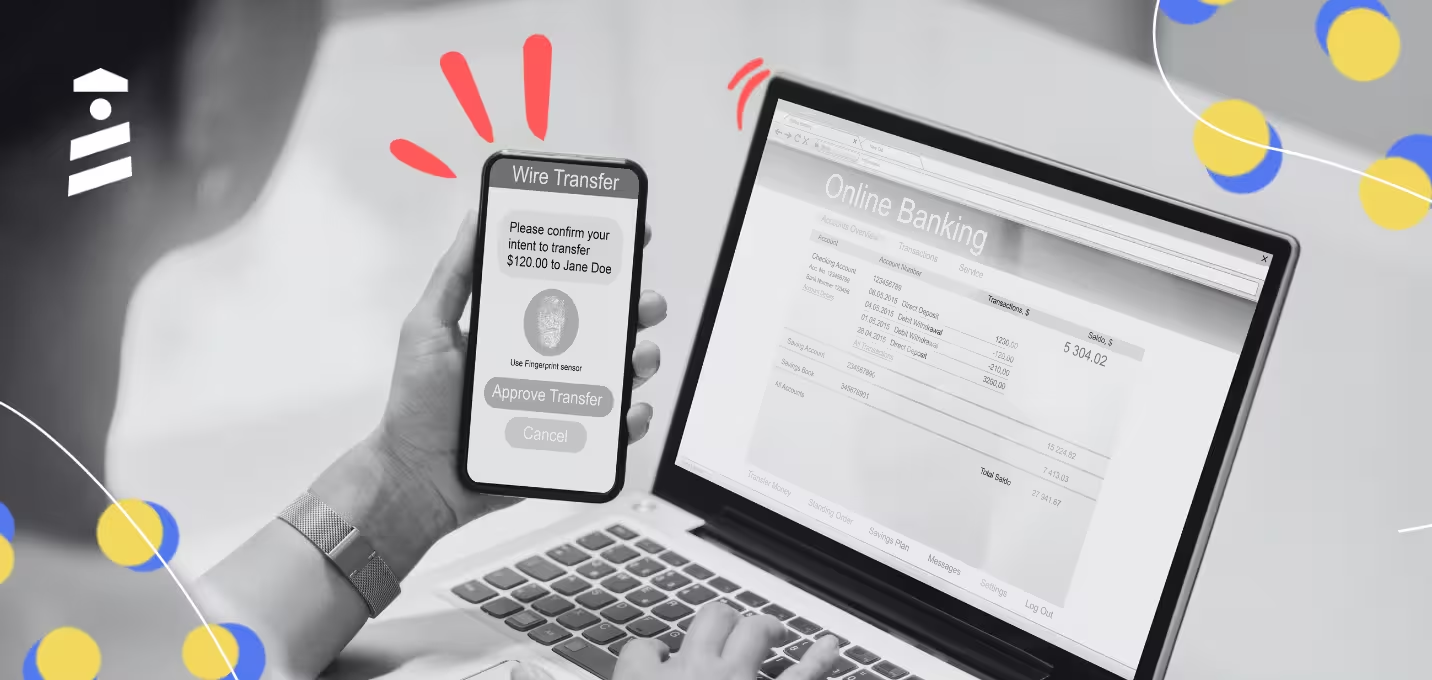

Customer education guides your users on how to utilize your features and adopt your platform the right way.
In this way, they can uncover your product value quickly and ultimately take the initiative and explore your product without your nudging.
That's why it's an important topic to discuss further and identify educational opportunities on your platform.
Feel free to delve deeper into it ⬇️
TL;DR
- Customer education programs are crucial for users to start using your product or service effortlessly as they become more familiar with it and understand its capabilities.
- They have several benefits, including
- an increase in product adoption and user engagement,
- reduce in support tickets,
- an elevation in customer satisfaction,
- a higher CLTV, and
- a positive brand reputation.
- Building a seamless customer education program requires you to go through a few steps, such as
- identifying your audience,
- designing a content strategy,
- promoting through the right channels, and
- keeping track of its success.
- To design a full content strategy, you need to determine the content formats that you can adopt. These formats include onboarding guides, knowledge bases, video tutorials, case studies, and interactive product tours.
- For the channels, you can choose from in-app learning modules, learning portals, email drip campaigns, webinars, and community forums, or create a logical mix.
Benefits of Customer Education
As customer education is the means to customer success, it has many benefits.
Let's analyze them one by one:
1- Increased product adoption and user engagement
Customer education enables users to see how your product works, sometimes with hands-on experiences.
This type of training helps them reach their Aha! moment quickly and understand your value proposition.
Upon seeing how they can derive meaning from your features, they'll be one step closer to adopting your solution to eliminate everyday pain points and starting to use it to accomplish their goals.
Increasing product adoption will have a positive effect on how frequently and actively your users utilize your product, in other words, user engagement.
2- Reduced customer support tickets and workload
Single-handedly, customer education lessens the load of the work off your support team's back.
By offering customer education and designing resources that are available 24/7 for users to find the answers they're looking for, you can see a significant change in your customer support team's tickets.
For instance, users can find solutions to frequently asked questions without opening a support ticket when there's a knowledge base that offers help anytime.
This self-serve approach also allows your support team to take on more urgent queries from other customers.
3- Improved customer satisfaction and loyalty
Learning how to fully benefit from a platform helps users start taking their steps more intuitively, enabling them to interact with the product without confusion.
Thus, they can utilize the platform to better fit their needs and make each interaction more meaningful.
Plus, the ability to obtain information through additional resources whenever they face a challenge leaves a positive impact on your users' minds.
Thanks to these elements, customers will be more pleased with the service they're getting and grow more attached to your product.
4- Increased customer lifetime value (CLTV)
Over their average customer lifetime, customers will contribute to your revenue based on the value you create.
Seeing what your product promises, customers will get the urge to match your features with their pain points, eliminating the latter.
Customers will use more features, be willing to upsell, and get add-ons, becoming high-value customers and increasing their lifetime value in the long term.
5- Enhanced brand reputation and positive word-of-mouth
Creating power users who utilize your product on a daily or weekly basis through seamless customer education increases the chance to develop a positive perception not only in your customers' minds but also in the market.
This kind of positive impact also turns your customers into free brand advocates, as they start
- recommending the platform they use,
- leaving reviews, and
- interacting with your page on social media, persuading others to invest in your product.
Good brand reputation and positive word-of-mouth marketing come with several advantages, including increased sales, customer confidence, and customer loyalty.
How to Build a Customer Education Program for Your SaaS
It's time to take a step further and learn how you can create a customer education program for your SaaS in 4 steps:
1- Understanding Your Audience

To offer a customer education program, you'll need to connect with your customers on a different level so that you can give them a personalized experience.
The first step includes segmenting your customers based on their personas with the help of user persona surveys.
After obtaining enough user data, you can match the personas with your customer education goals and decide which ones to target.
This kind of service would work like a charm when catered to the right audience; for example, if a specific persona were to struggle with a particular action, you could provide content that offers the solution to that problem.
2- Developing Content Strategy
This step in creating a customer education program includes developing a solid content strategy that solves each issue in the right type of content.
You can develop a mix of content formats, including:
2.1- Onboarding guides and tutorials

A complete customer education sequence cannot take place without seamless onboarding since it's where users meet your product for the first time (demos don't count 🤫).
Your onboarding process should include interactive components that urge users to take action rather than observe what unfolds before them.
This way, users can be confident to explore your product without initiative.
Onboarding guides and tutorials should also have UI elements that
- highlight specific features,
- display clear solutions to pain points, and
- inform users shortly about the capabilities of your product.
2.2 - Knowledge base

Knowledge bases can significantly affect customer education, as they are unified centers that offer accessible information 24/7.
In these centers, you can provide users with answers to the frequently asked questions related to your product.
This section can inform users about your features and pricing structure and how to access help materials in other forms when needed.
Moreover, your self-service support content would ensure even greater benefits when implemented inside your application, not disturbing the user experience.
2.3 - Video tutorials
Offering visual explanations, video tutorials generate a crucial part of customer education.
This option lets users see your product in action, solving specific frustration areas.
These videos demonstrate how to use visual aids and offer an accessible service with pause, replay, and rewind options to ensure users don't miss any challenging sections when revisiting them.
2.4 - Case studies and customer success stories

Case studies and customer success stories enable users to self-educate themselves through informative content explaining how other businesses benefited from your tool.
While case studies explore how your tool solves specific industry-based problems, customer success stories tell users how customers profited from your tool in specific contexts.
That's why it makes a logical decision to adopt these two means, which create a reality backed up with data to show users a clear path to follow.
2.5 - Interactive product tours

Customer education includes materials that streamline the learning process to adopt your product.
One of these materials is surely interactive product tours with which you can demonstrate the value of your product.
These tours can take a user from the beginning and help them get to the finish line in terms of the capability and features of your product.
Product tours include UI elements that underline particular functions, increasing engagement and retention. This allows users to get used to your product without spending too much time determining its worth.
3- Delivering in Right Channels
One of the steps that you need to take when forming a customer education program is presenting your content through the right channels.
Here are some of the channels that you can distribute your customer education program materials:
3.1 - In-app learning modules
One of the most effective ways that allow you to deliver your educational content is through in-app experiences, which bring in-app learning modules to mind.
These learning modules don't interrupt the user experience, helping them reach the content that can enhance their understanding in the blink of an eye while they interact with your product.
For example, you can embed these modules into strategic places where the UX can aid the learning process, thinking from the user's perspective.
3.2 - Dedicated learning portals
Customer education content belongs to a dedicated learning portal where users can display all the content and resources you have for them.
The content you design for this environment can be unique by being a hybrid product, half interactive and half noninteractive.
For example, courses can help users learn about your product features and how they can derive more meaning from them based on how they wish to utilize your platform.
3.3 - Email drip campaigns
Email drip campaigns are another way to ensure a high success rate in customer education.
You can design an automated drip campaign series to send to users who take a specific action on your platform to inform them. You can do the same for users who don't spend too much time exploring your product.
These series can include informative content that persuades users to take particular actions that will enable them to employ your platform more frequently for everyday tasks.
3.4 - Webinars and live sessions
Webinars and live sessions enable your team members to educate users and potential users about your product's offerings and how they match their use cases.
During these sessions, you get the chance to introduce your product, use it to provide your audience with sneak peeks of your product's digital experience, and show how it eliminates their pain points based on the topic.
Live sessions differ from webinars in that they also include live parts where your audience can ask questions, but both tools can help you generate leads, retain users, and inform your audience.
3.5 - Community forums and user groups
Customer education isn't only a tool you can feed; your customers can also contribute to your educational content through forums and groups.
This doesn't mean that you can't have a voice on these platforms since you can have an official account that answers product-related questions and helps users get rid of any question marks in their heads.
4- Tracking and Measuring Success
To reach customer success, you need to keep track of the metrics related to your customer education program.
If you don't wish to spend your in-house efforts on this aspect, you can also opt for analytics tools to gather data and identify areas for improvement.
Here are the key metrics that you should keep in mind:
4.1 - Completion Rate
To measure customer education program effectiveness, you must check the completion rate for your onboarding modules.
The completion rate provides you with a percentage based on the total number of new users who started and finished their onboarding.
Determining how successful your program is will also point you to the areas that are in need of improvement.
Keep in mind that this rate also indicates whether your users get the hang of your product, giving you an idea of revisiting your onboarding materials and adjusting your approach.
You can calculate this metric by dividing the number of new users who complete their onboarding modules by the total number of customers over the same period and multiplying the result by 100.

4.2 - User Engagement with Content
User engagement is the backbone of measuring success for SaaS products and it doesn't change when it comes to customer education programs.
That's why you should track whether your users interact with the educational materials you deliver; this interaction can include users who watch your educational videos, sign up for further content on the topic, and view specific help pages.
To do so, you need to define your time frame first. Then, you should divide the number of engaged users who interact with your educational content in that specific time frame by the number of total users during that period.
To get a percentage, you should multiply the result by 100.

4.3 - Support Ticket Reduction Rate
Thanks to the customer education programs, the number of tickets your support team receives should decrease significantly.
The density of this decrease can show how beneficial your informative content is for your users and give you a reason to update them.
To calculate this metric, subtract the number of support tickets your support team received this month from last month's tickets.
The last step includes multiplying the result by 100 to get a rate.

Conclusion
Long story short, customer education in SaaS is essential for getting your users more acquainted with your product.
For this reason, you should find ways to adopt some solutions to your platform.
From onboarding guides to drip email marketing, these solutions include various formats and channels, varying based on your audience and educational needs.
Give this article a chance for your next content strategy and see how your efforts born productive results ⭐

















.svg)
.svg)
.svg)
.svg)
.svg)

.svg)
.svg)












.svg)
.svg)




.png)
















